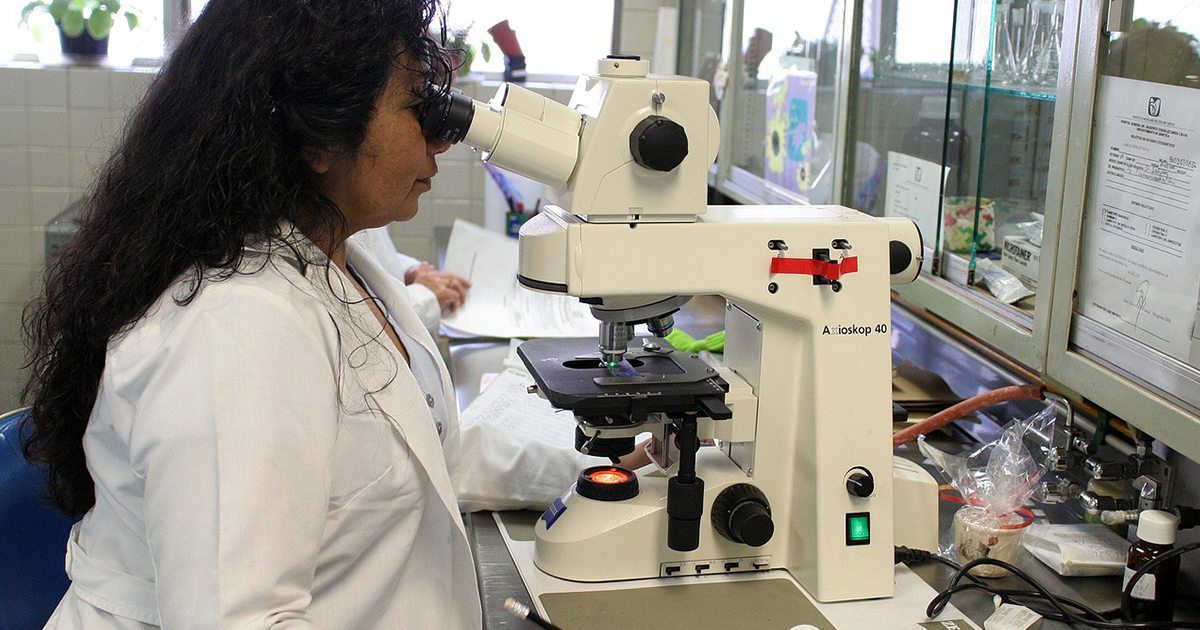Category: Cancer

Turning Off Certain Enzymes Could Stop Mesothelioma Growth
Researchers realize that one of the best ways to fight cancer is to stop it from growing and metastasizing in the first place. However, finding the right way to do that is not easy. Now, researchers believe that by turning off certain enzymes they can stop cancer cells from dividing. This discovery may stop cancer in its tracks, and bring new treatments that could extend the lives of mesothelioma patients.
Researchers from Uppsala University, Karolinska Institutet, and the University of Oxford, began to look deeper into finding a way to switch off enzymes as a promising strategy to fight cancer. Tailored drugs are needed to shut down an individual enzyme, but before they could look at new therapies, they needed to better understand how cancer-fighting drugs get to their targets.
The team of scientists turned their focus deep into the cells to a cell membrane protein dehydroorotate dehydrogenase (DHODH), a key anticancer target known to play a role in cell proliferation, according to a Jan. 19 press release from Uppsala University. They conducted a series of tests to determine how lipids, or building blocks of the cell membrane, and drugs bind to the DHODH enzyme. By better understanding this mechanism, they can better understand how to drive drugs directly to the disease.
“To our surprise, we saw that one drug seemed to bind better to the enzyme when lipid-like molecules were present,” says assistant professor Michael Landreh, Karolinska Institutet. In addition, they found that a lipid present in the mitochondrial respiratory chain complex, or the cell’s energy source, binds to the enzyme. The researchers concluded that DHODH may “use special lipids to find its correct place on the membrane.”
Research suggests that tumor metastases are responsible for approximately 90% of all cancer-related deaths. Funding research to find ways to have drugs home in directly on the disease brings hope to every cancer patient. In the case of mesothelioma, an incurable, asbestos-caused cancer, that quickly spreads to other organs leaving patients with few treatment options, halting cancer growth could lead to extended survival. Survival is typically about one year.
“By studying the native structures and mechanisms for cancer targets, it may become possible to exploit their most distinct features to design new, more selective therapeutics,” says Sir David Lane, Karolinska Institutet.
To find out more about this research, read the full study in the Jan. 18 issue of Cell Chemical Biology.
http://www.cell.com/cell-chemical-biology/fulltext/S2451-9456(17)30461-0

Researchers Seek to Understand Why Lungs Are Susceptible To Cancer
The body has a cadre of defense mechanisms that work together to fight off illness and diseases. When they fail, however, a person can be left fighting a deadly disease like mesothelioma. Now, researchers believe that the same defense meant to prevent people from having a reaction to breathing in daily environmental exposures could be the same mechanism that allows cancer cells to spread and grow in the lungs.
According to an Aug. 25 press release from the Ohio State University Comprehensive Cancer Center, researchers report that the oxygen breathed in can suppress immune responses to cancer. They found that oxygen-sensing proteins, or PHD cells, limit inflammation by T-cells, the cells in the immune system that kill bacteria and cancer. In the “highly oxygenated lung microenvironment” the PHDs limit the T-cell functions, thus, setting the lung up as a “fertile ground for metastasis.”
“The same ‘normal’ mechanisms put in place to suppress immune responses against harmless material taken into the body during the act of breathing can also suppress immune responses to the colonizing cancer cells that lead to metastatic tumors in the lungs,” said David Clever, PhD, first author of the manuscript and a current medical student at Ohio State. “This creates an immunologically favorable niche – meaning the environment is prime for cancer cells to slip through the immune system’s defenses, thrive and grow in the lungs.”
The American Cancer Society reports that it is cancer metastasis, and not the original cancer diagnosis itself, that is the cause of nearly all cancer deaths. In fact, 90 percent of all cancer deaths are due to metastasis. Lung cancer and mesothelioma can spread to other organs of the body, including spreading to the other lung.
Mesothelioma, an unusual form of cancer caused by breathing in asbestos fibers, can take decades to show symptoms. Mesothelioma treatment follows a similar treatment protocol to lung cancer, so each new discovery related to lung cancer brings hope to the patient community.
The Ohio State team found that by blocking the PHD proteins, they could enhance T-cell responses against cancer and limit metastasis to the lung. Through testing the theory in mice using adoptive cell transfer immunotherapy, or manipulation and re-injection of T-cells, the researchers were hopeful their findings could lead to new therapies.
“Although our finding is in mice, we are eager to test whether disruption of the oxygen sensing machinery in T cells — with drugs, genetics, or regulation of environmental oxygen — will enhance the efficacy of T-cell mediated immune therapies for cancer in humans.”
2,500 to 3,000 people are diagnosed with mesothelioma each year in the U.S. There is no cure for the cancer, however, immunotherapy treatments, available to limited patients, have shown success in extending survival in mesothelioma patients.
The study can be found in the Aug. 25 issue of the journal Cell.
Know more about Mesothelioma and how you can deal with it.

Mesothelin May Play Multiple Roles in Spread of Mesothelioma, Other Cancers
Mesothelin is a protein found on the surface of some cells in the human body. Its biological purpose is a bit of a mystery frankly. But it occurs in overabundance in certain types of cancer cells including ovarian cancer, pancreatic cancer and mesothelioma, a cancer of the lining of the lungs and abdomen. Therefore, it’s on scientists’ radar screen.
Scientists are evaluating the role of mesothelin in the spread of cancer and its potential usefulness as a signal of cancer for doctors who are trying to diagnose a patient’s disease such as mesothelioma, a cancer caused by asbestos exposure. There are treatments for mesothelioma, but as yet, there is no known cure. Approximately 2,500 to 3,000 people in the U.S. are diagnosed with malignant mesothelioma each year in the U.S., primarily as a result of asbestos exposure at a workplace or during military service.
In a mesothelioma researcharticle published in February 2013 in the journal Anti-Cancer Agents in Medicinal Chemistry, medical researchers at the National Cancer Institute in Bethesda, Maryland and East China Normal University in Shanghai, say that there are three ways that mesothelin may play a role in the advance of cancer, as previous studies have suggested:
- Implantation — Mesothelin may aid in the implantation of tumors in the abdominal cavity, leading to peritoneal mesothelioma;
- Survival — Mesothelin may play an important role in the survival of cancer cells;
- Resistance — The presence of mesothelin may cause resistance to certain chemotherapy drugs.
As a result of the key role of mesothelin, the researchers say that a drug that neutralizes the functionality of mesothelin may be helpful in cancer treatment, making chemotherapy drugs more effective, for instance. Some antibody drugs that disrupt the function of mesothelin are currently being evaluated in clinical studies.
The researchers say additional research is needed to evaluate the role of mesothelin in the growth and spread of malignant tumors, cancer cell survival and drug resistance. They conclude that studies on mesothelin biology may give opportunities for more effective antibody therapy targeting mesothelin in solid tumors.

Penn Researchers Developing Protein ‘Passport’ To Help Deliver Cancer Drugs
The body’s immune system is designed to defend against bacteria, viruses and other perceived “foreign invaders” that assault the body. Unfortunately, the immune system doesn’t distinguish between harmful bacteria and friendly foreign objects such as medical devices implanted in a patient or nanoparticles used to deliver medicine to tumors. That poses complications to doctors trying to administer treatments to people with cancer, including malignant mesothelioma, a cancer caused by exposure to asbestos.
Doctors would like to avoid triggering an inflammatory response in cancer patients when they administer medicine or when implanting a pacemaker or artificial joint. Researchers at the University of Pennsylvania are experimenting with what they describe as “a passport” to allow therapeutic devices to get past the immune system, according to new research published in the journal Science.
The human body’s innate immune system responds to foreign bodies in a generalized way, trying to destroy anything it doesn’t recognize as a part of the body. The team of Penn researchers says the solution is to make the foreign particles seem like part of the body so the immune system doesn’t destroy them.
The researchers reported this week that they had accomplished that feat in lab mice, attaching customized protein fragments to foreign particles that tricked the animals’ immune system. The key was tricking the immune-system “border guards” known as macrophages that are a type of white blood cell that find and eat invaders. Macrophages continually monitor the bloodstream for a type of protein called CD47, a marker of self. If an object such as a red blood cell has CD47 on its membrane, the macrophages let it pass.
The Penn team leader, Dennis E. Discher, a professor of chemical and biomolecular engineering, compared CD47 to a passport that identifies a cell as part of the body rather than a foreign object. The research team attached fragments of CD47 to plastic nanoparticles, then injected them into laboratory mice. Nanoparticles, which are smaller than one-billionth of a meter, are useful in delivering, antibodies, drugs and imaging agents and are being studied for diagnosis and treatment of cancer, according to the National Cancer Institute.
The researchers said the technique enhanced the performance of nanoparticles carrying tumor-shrinking medicine and other loaded with dye to capture images of the tumors. They observed that the particles carrying a cancer drug Taxol were shrinking tumors in mice.
Discher said in an article in the Philadelphia Inquirer that the technique could be useful in overcoming resistance to much larger foreign objects in the body such as pacemakers and joint replacements.
Researchers not involved in the research called it a promising advance, though it will take some years before the technique is ready to use with human cancer patients.
Know more about mesothelioma and how you can deal with it.
Researchers Assess Safety and Effectiveness of New Mesothelioma Drug
Medical researchers at Memorial Sloan-Kettering Cancer Center in New York have treated the first patient with a new experimental vaccinia virus-based cancer therapy designed for patients with malignant pleural mesothelioma or non-small cell lung cancer. Mesothelioma is a cancer of the lining of the chest cavity caused by exposure to asbestos.
Genelux Corp., a biopharmaceutical company that develops vaccinia virus-based cancer therapies, announced in a Feb. 6 press release the treatment of the first patient in the Phase I clinical trial designed to evaluate a drug known as GL-ONC1.
Vaccinia virus cancer therapies are part of an emerging area of medical research that utilizes modified viruses to target and destroy malignant cancer cells. Vaccinia virus produces a potent immune reaction to help destroy tumors. The virus was used extensively during the campaign to wipe out smallpox.
Through the current trial, the New York mesothelioma treatment researchers want to learn more about the safety and effectiveness of the new drug at different dosage levels on cancer patients with malignant pleural effusion. The accumulation of fluid between the thin layers of tissue lining the lung is known as pleural effusion. When the fluid contains cancer cells, it is known as malignant pleural effusion. A buildup of fluid is a complication that occurs in many patients who have pleural mesothelioma or lung cancer.
The clinical trial, which is recruiting patients, will assess the safety and tolerability of GL-ONC1 and the severity of side effects. The primary goal is to assess a safe dosage level. The trial may enroll up to 54 patients.
Dr. Valerie W. Rusch, a leading thoracic surgeon and expert on mesothelioma, is the lead researcher in the clinical trial sponsored by Memorial Sloan-Kettering Cancer Center.
“We are very pleased that researchers at MSKCC have initiated this important trial, “Dr. Aladar A. Szalay, founder and CEO of Genelux Corp., said in a press release. “For the first time, this will allow us to examine the feasibility and effects of administering GL-ONC1 directly into the chest cavity to some of the most aggressive cancers of the thoracic cavity—including mesothelioma and non-small cell lung cancer.”
Szalay said the drug has been well-tolerated and shown promising results in early trials involving human patients against a number of solid tumor cancers.
Mary Hesdorffer, executive director of the Mesothelioma Applied Research Foundation, an advocacy and support group, said novel therapeutic approaches based upon new scientific strategies may lead to more effective treatments and eventually a cure for mesothelioma.
Free Mesothelioma Patient & Treatment Guide
We’d like to offer you our in-depth guide, “A Patient’s Guide to Mesothelioma,” absolutely free of charge.
It contains a wealth of information and resources to help you better understand the condition, choose (and afford) appropriate treatment, and exercise your legal right to compensation.
Download Now